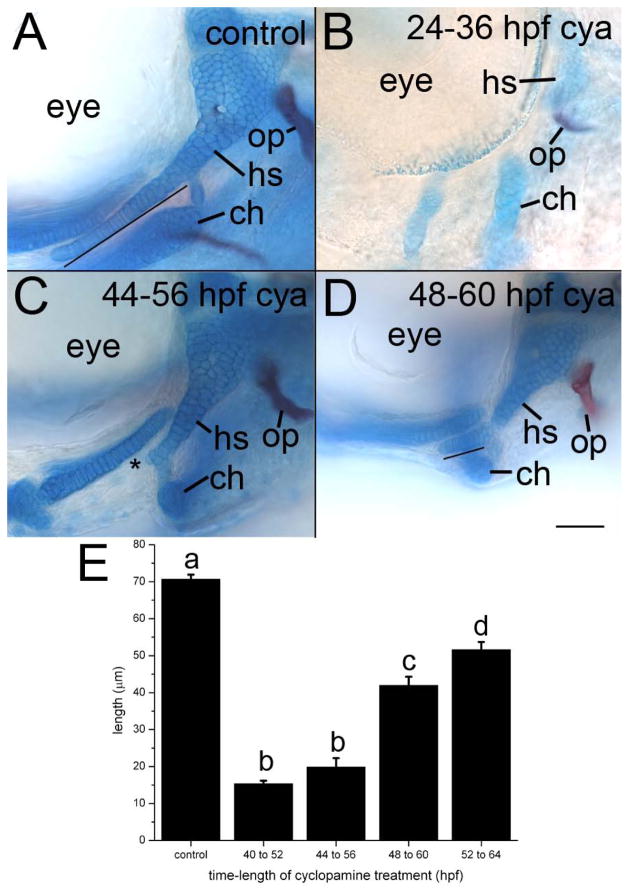Fig. 3.
Morphogenesis of the pharyngeal skeleton requires continued Hh signaling. (A–D) Whole mount images of (A) control (ethanol treated) and (B–D) cyclopamine (cya)-treated 4 dpf fli1:EGFP embryos. (A) Regardless of the timing of the control treatment, the symplectic rod (line) extends beyond the interhyal in control embryos. The opercle (op) bone attaches to the proximal hyosymplectic. (B) All skeletal elements are severely hypoplastic following cyclopamine treatment from 24–36 hpf. (C) The symplectic rod is completely lost in treatments as late as 44–56 hpf (asterisk). In treatments that initiate at 48 hpf, the symplectic rod (line) forms but is shortened. Anterior is to the left; dorsal is up in all images. Scale bar=50μm. (E) Average (+/− 2 standard errors of the mean) symplectic length across treatments. Different letters over the bars denote statistically significant differences (p<0.5).

